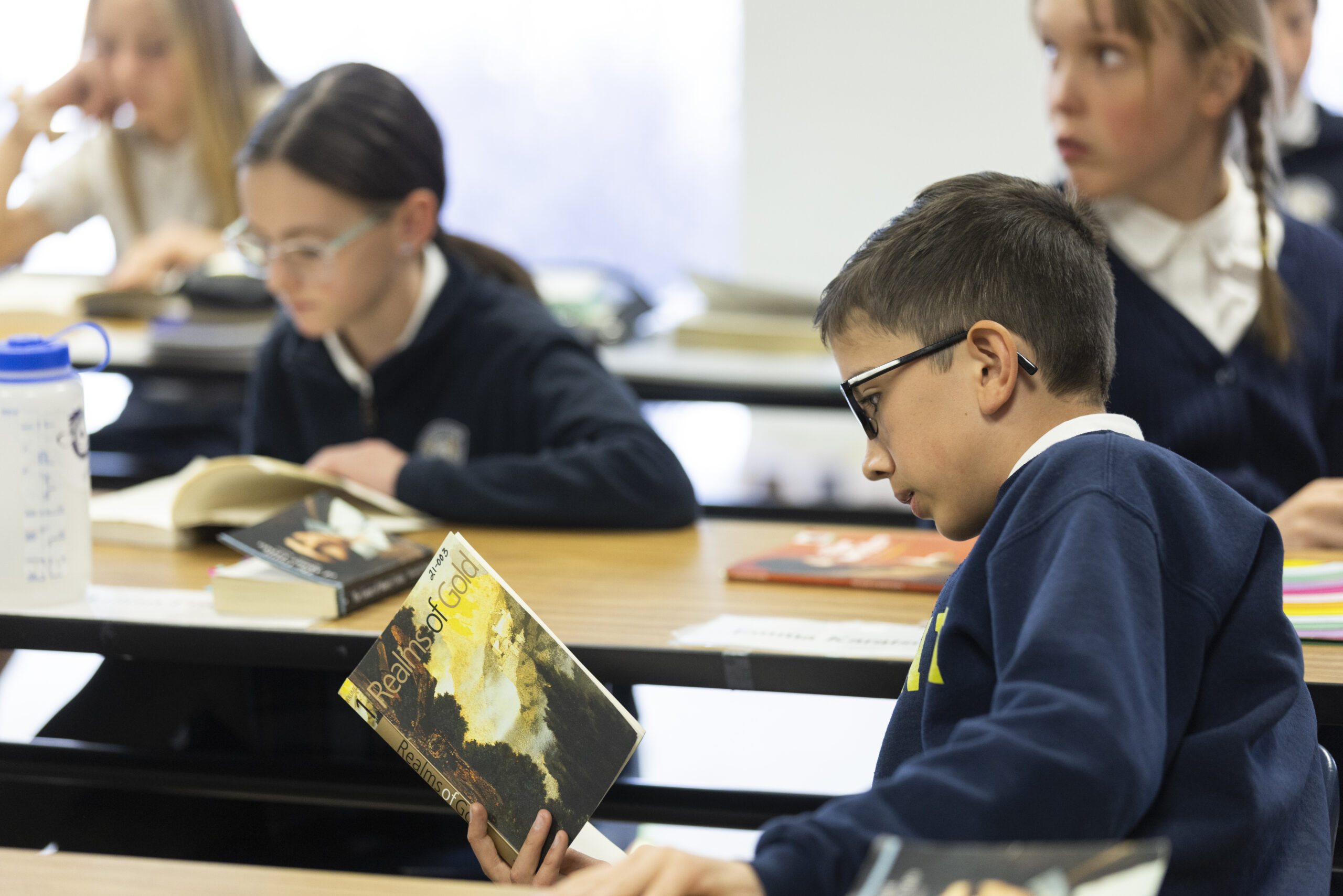“Robin Hood is sometimes hot-tempered just like Henry II!” “Gaheris in our King Arthur book is a squire, just like we talked about in history class!” These are just a few examples of a typical observation made in my literature class on a weekly basis. One of my favorite aspects of our classical curriculum is how well the subjects we learn about intertwine with our literature stories.

One of my earliest memories is that of my mom sitting in the hallway outside my bedroom, reading aloud a book every night. The books she selected were filled with exciting stories and characters that I grew to love. One of my favorite types of stories quickly became historical fiction. I loved getting to envision living in a different period of time. My enjoyment grew significantly when I already knew some information about the setting of the story. I love that the stories I read with my students are intentionally matched to the history content I am teaching so my students can enjoy that heightened understanding of the characters and their lives. After learning about tournaments and jousting, we see Lancelot and the other knights competing in them in a vividly described scene. After learning about the British taxes, we enter the world of Johnny Tremain where we see “real” people living under their toll. My students are able to truly immerse themselves in the worlds we study due to this interwoven curriculum.
However, my love of the books my mom read did not solely come from the depths my imagination could reach. It was through these stories that I developed a large part of my character. One of the most powerful stories I remember my mom reading was the book The Summer of the Monkeys by Wilson Rawls. This novel tells of a boy living in the Ozarks during the time of Westward Expansion. Throughout the story, the boy, Jay Berry, desires above all else to buy a pony and a gun. He believes that possessing these two items is what elevates someone from being a boy to a man. Near the end of the story, Jay Berry collects the reward money from recapturing some escaped monkeys and finally buys these things. As he proudly leads his newly-purchased pony home, Jay Berry looks up the hill to see his little sister, Daisy, hobbling around on her crutches. His parents have been saving since Daisy’s birth to try to afford the costly operation that could cure her of her birth defect. As he watches his sister, Jay stops in his tracks; then, as his father looks on, Jay Berry turns his horse around and begins leading it back to the store. When he returns home, he presents the reward money to his father, saying he wants to use that money to pay for his sister’s operation. Jay’s father stands up and shakes his son’s hand. This self sacrifice is what it truly means to become a man.
As a young girl, I couldn’t fully comprehend the power of this story. However, watching my mom being brought to tears reflected that there was something deeply powerful in this story. I returned again and again to this book, each time gaining a deeper sense of why Jay Berry’s actions truly marked him as a mature adult.
Now as a teacher, I am the one sobbing at the end of our novels. The stories we read in literature provide ample opportunities for our students to develop their own characters. Anne of Green Gables teaches the wonder to be found in the world and the completely selfless love that can develop between a parent and child. The Scarlet Pimpernel shows the amount of courage a single person can display. The Wind in the Willows demonstrates the purity of a true friendship. Literature is truly one of the most powerful subjects we get to teach.

